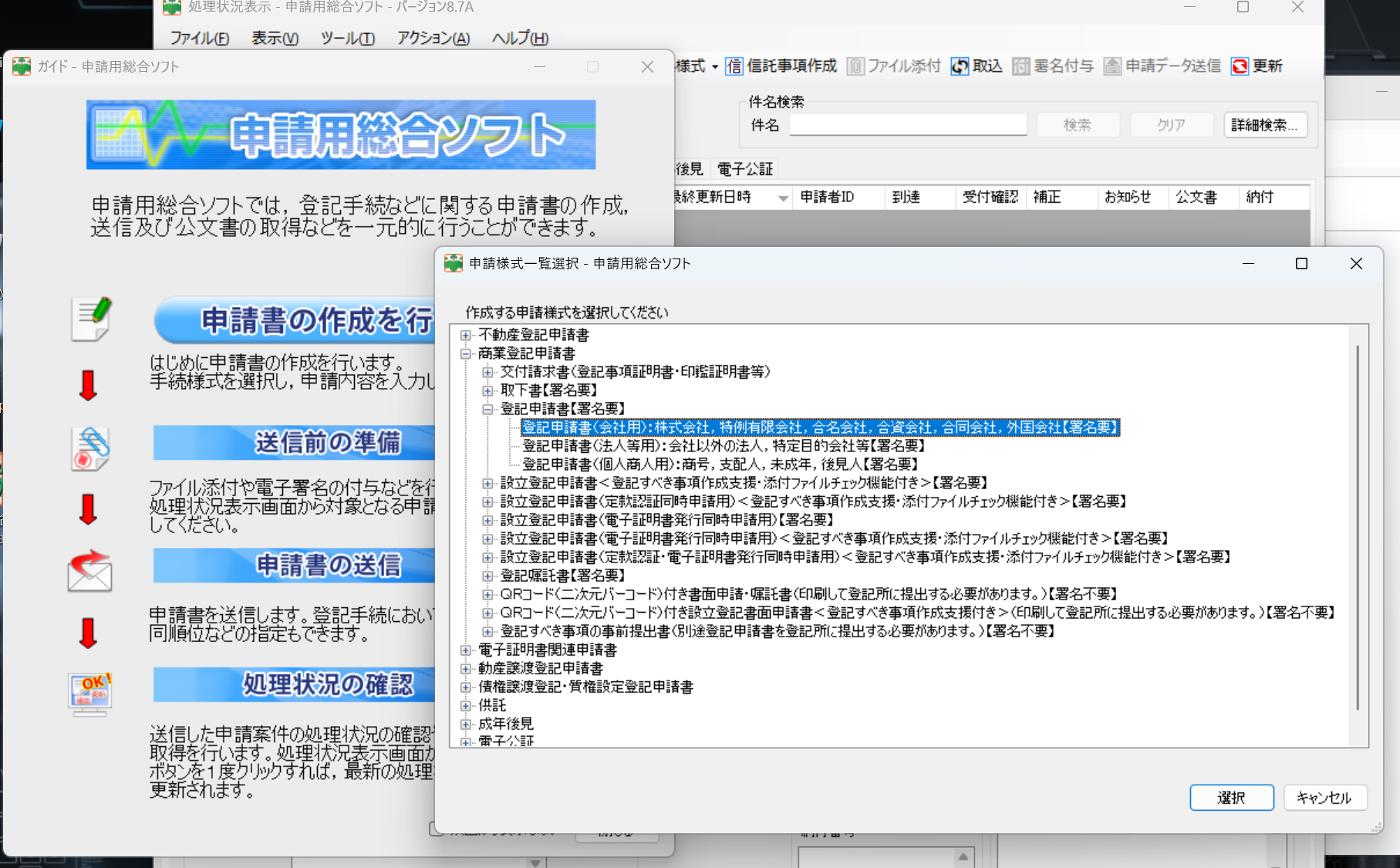Spoiler Alert: I started a new company! More on that in the coming weeks.
When I formed Mission One, all the way back in 2008, I hired a lawyer to handle all of the registration paperwork for me. It didn’t cost too much, and was basically a one-stop shop kind of deal.
This time around, I decided to do it myself. I saw that you could do it all via software provided by the government, and it said kantan (“simple”) right there on the website, so it had to be easy to do, right?
Alas, somehow I forgot the lessons I talked about in my Japanese PowerPoint article, and went in thinking that the government, in a progressive endeavor to embrace the burgeoning startup community in Japan, had at last made it easy to register a company.
Let me show you how I was wrong.
Putting the Where in Software
After deciding the name of the company and whether I wanted to make it a corporation or LLC (I chose the latter), it was time to take the shinseiyou sougou sofuto (“comprehensive software for application”) for a ride. Here’s where it gets bumpy.
They provide a manual, and following it was easy enough, but I had some questions, and decided to open up the Help menu…

… and we’re partying like it’s 1999. My goodness, just look at that. It is quite literally the Windows 98 help file format, filled with walls of kanji. Needless to say, there was no help to be found here.
So I just tried sending in the paperwork to see what would happen. Of course I did some things wrong. After three very friendly calls from the Regional Legal Affairs Bureau, Ts were un-dotted and Is uncrossed, and I was ready to submit the final paperwork. But there was one problem…
Prove Yourself
In order to submit the final paperwork, you have to sign it with a digital certificate. No big whoop, I do this sort of thing all the time in app development. But then I tried the government-provided software made especially for this, which was probably made when computers still used vacuum tubes, as on a modern OS it looks like this:

I ended up having to change some language encoding settings on my machine to get it to work. I then filled in the necessary information, and it spat out some files. Right on, we should be just about there, right?

No! Signing the doc requires a .p12 file, the one type of file the software didn’t give me. I spent hours combing the web trying to figure out how to make said .p12 file, but to no avail. You know why? The government recommends that you burn the files to a CD (or USB stick), and bring the media to the local office, hand it off, and wait however long for them to send you the .p12 file via snail mail.
What year is this?
I refuse to use physical media to make a digital certificate in this day and age. Thankfully, there was one more solution…
Take My Card

In Japan, we have a form of identification called a My Number Card, which has an IC chip that stores some personal information. The good news is that this card can be used to sign your paperwork! 1 day and 8 bucks later, my IC card reader arrived, and all my headaches were gone. It worked like a charm, my paperwork went through, my company was formed, and there was peace in the land.

The last step was to get company stamps. You see, Japan still uses ink stamps instead of signatures, and you need these mighty seals in order to do things like open a bank account. While I respect the Game of Thrones vibe you get when you use one, it is yet another relic of times past that you think would be improved upon by now.
There are plenty of companies that make custom corporate stamps, and they invariably try to upsell you on fancy titanium ones that will last for several lifetimes while costing you fistfuls of yen. I chose the cheap 4,000 yen ($28 USD) ones.
The last step is registering the stamps with the government, so they know that they are officially official. Yes, that means more paperwork. To turn in said paperwork, I had to go across town, back to my old Setagaya stomping grounds, which necessitated a ride on the Setagaya line, the cutest train line in all of Tokyo.

Sadly, I got promptly turned away because I forgot to bring my personal stamp along with the corporate ones, which you need to stamp on the form to make your corporate stamps stamp-y enough to stamp for real. Sigh. I went back the next day, got it all taken care of, and we are in business.
The Coming Storm
It’s finally done. Now all I have to do is make a website, a logo, business cards, contacts, partners, clients…
But at least the hard part is done.


